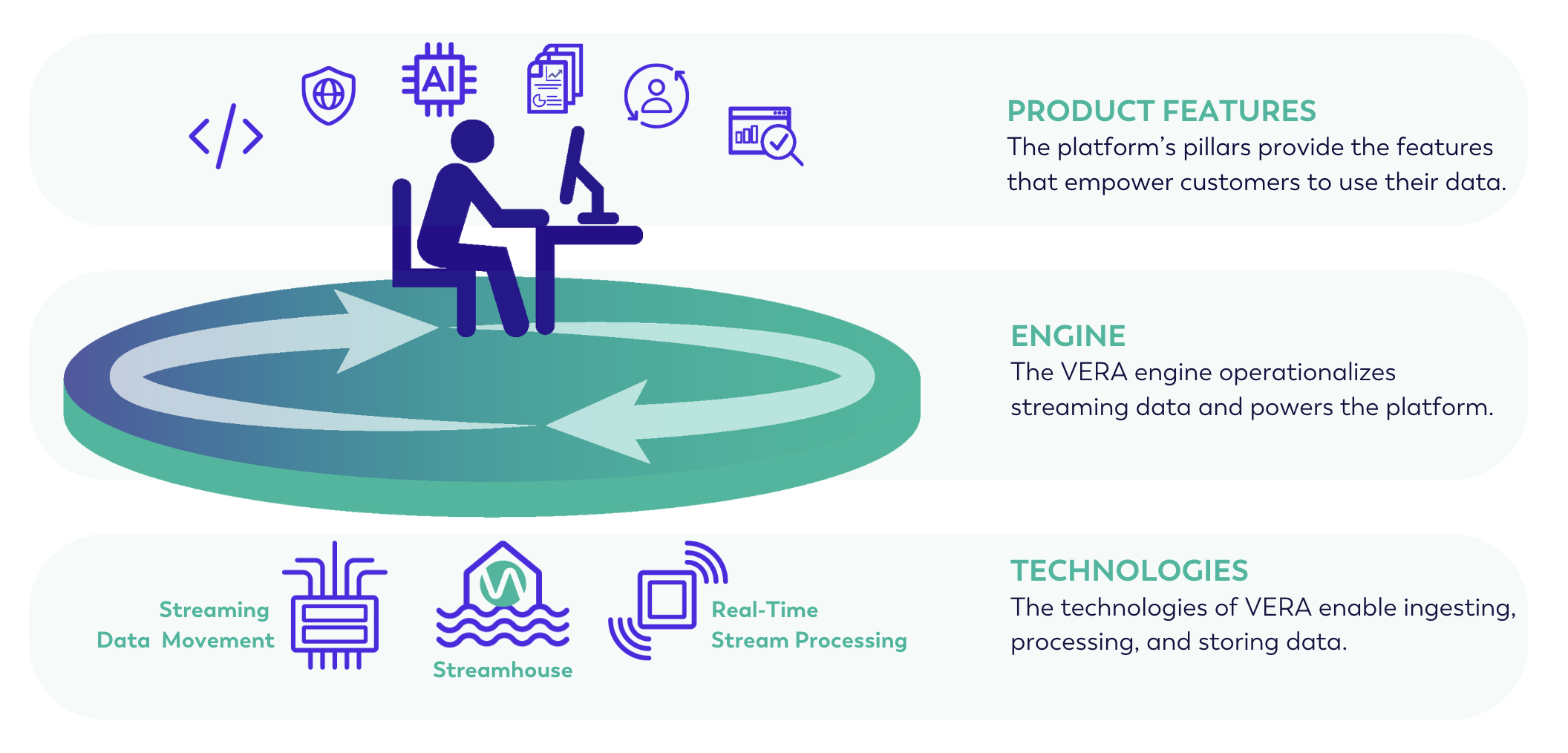About Ververica Unified Streaming Data Platform
Ververica Unified Streaming Data Platform is a data platform that enables organizations to connect, process, analyze and govern their data to make informed business decisions in real time. At its core, the platform is about data and has two purposes: managing the data and enabling you to use that data.
The platform consists of three main layers or components:
- The engine (VERA) that operationalizes streaming data and powers the platform.
- Core technologies or pillars of VERA that allow you to ingest, transform, process, store, and extract meaning and insight from your data.
- A user-friendly platform with foundational pillars or feature sets that make it easy for you to use your data.

Engine
The first layer of the platform is VERA (Ververica Runtime Assembly), a proprietary cloud-native engine that runs on the open-core technology stack behind VERA (Apache Flink). With its Ververica-built optimizations and advanced CDC connectors, it evolves Flink to run natively in modern cloud environments. For more information, see About VERA.
Technologies
The next layer is the technology ecosystem behind VERA that is specifically tailored for streaming data movement, real-time stream processing, and a streaming lakehouse (Streamhouse).
- Streaming Data Movement is the end-to-end process of moving data through VERA.
- Real-time Stream Processing involves collecting and ingesting data from various data sources, and processing that data in real time to extract meaning and insight.
- Streamhouse (streaming lakehouse) provides stream processing capabilities while maintaining near-real-time results on the data lake.
For more information, see VERA's Core Pillars.
Platform Pillars
The third layer is Ververica Unified Streaming Data Platform's foundational pillars and the use cases they solve, including:
- Development Efficiency: Provides tools to accelerate the development and scaling of data stream processing applications, maximizing performance while minimizing resource usage.
- Operational Excellence: Streamlines operations with features that enable continuous improvement, observability, optimization, and management of data streaming infrastructures.
- Elasticity: Automatically and dynamically scales resources and storage based on current workloads and capacity, ensuring cost-efficiency and resource availability during peak events.
- Data Governance: Offers a framework to set, enforce, and monitor policies on platform resources and data, ensuring organized, secure, and consistent data management.
- Security: Implements mechanisms to protect sensitive data and ensure compliance with regulatory standards at both data and user access levels.
- Multi-Tenancy: Enables running multiple independent applications in a shared environment with role-based access control, isolating resources and data at the namespace and tenant levels.
- Availability Everywhere: Provides flexible deployment options to meet various service and deployment model requirements, including self-managed software and managed services across multiple cloud providers and a BYOC (Bring-your-own-cloud) option.
For more information, see Platform Pillars.
Related Topics
- Explore the features and benefits in more depth, see Features & Benefits.
- Dive into the engine, see VERA and VERA's Core Pillars for more information.
- Learn more about the dashboard and console, see Interface Overview
- Create your first deployment, see Deployment Options.
To learn more about the Ververica ecosystem and how the components work together with our platform, see The Ecosystem.